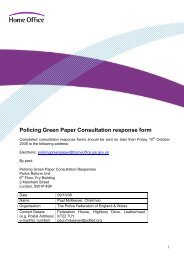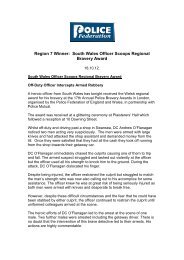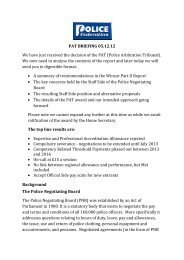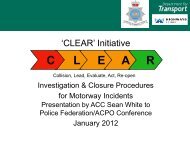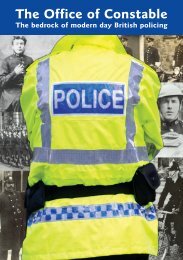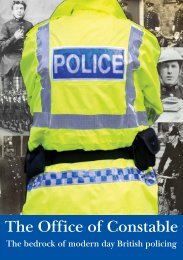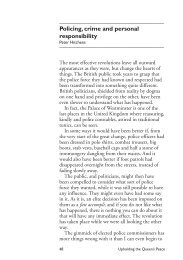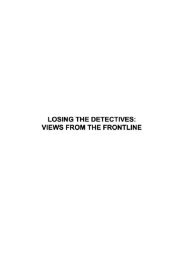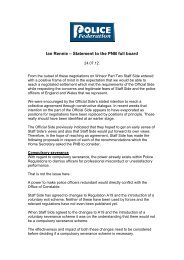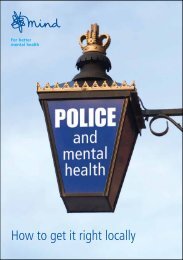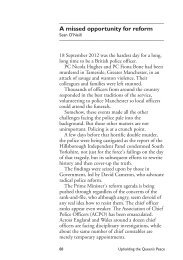Policing UK 2013 - Police Federation
Policing UK 2013 - Police Federation
Policing UK 2013 - Police Federation
Create successful ePaper yourself
Turn your PDF publications into a flip-book with our unique Google optimized e-Paper software.
THE ROLE OF POLICE<br />
“Armed police tactics and<br />
equipment have evolved following<br />
lessons learned from around<br />
the world and the <strong>UK</strong>.”<br />
The second example is deployment<br />
of TASER. This is perhaps the single<br />
most significant addition to an officer’s<br />
capability. Far less controversial than<br />
issuing firearms and in many cases vastly<br />
more effective, TASER can be deployed<br />
in a wider range of confrontations<br />
from domestic disputes to gang fights<br />
with blade and bottle. It is fear of use<br />
when spotted with a red laser that<br />
often calms people down and in many<br />
cases (internationally up to 80 per cent)<br />
compliance is almost instantaneous.<br />
Non-compliance followed by shock is<br />
statistically proven to be highly effective.<br />
<strong>UK</strong> police use of TASER has set an<br />
international ‘gold standard’ because<br />
of our stringent guidelines governing its<br />
use effectively and proportionately to a<br />
perceived threat. I advocate more use of<br />
video simulation to give the officer more<br />
challenging decision-making options onscreen<br />
that will further improve his or her<br />
skills. Live fire training is still essential,<br />
but static and dynamic simulation can<br />
add considerably to student turn-around<br />
and consistent competence.<br />
The third example is public acceptance<br />
that specialist armed officers are now a<br />
fact of life. The British model for policing<br />
is unarmed. Our armed response consists<br />
of a small core of very highly trained<br />
officers proficient in a wide range of<br />
tactics who are able to respond rapidly to<br />
all manner of incidents where an armed<br />
response is authorised.<br />
Armed police tactics and equipment<br />
have evolved following lessons learned<br />
from around the world and the <strong>UK</strong>. Less<br />
lethal options are essential. Gangs do carry<br />
sub-machine guns, handguns, machetes<br />
and knives and are ready to use them in<br />
a confrontation. However, our armed<br />
officers do effectively solve such incidents<br />
without loss of life, mainly because<br />
team work and exemplary training often<br />
matches up to Special Forces standards.<br />
Night vision, thermal imagery, secure<br />
communications and specialisations such<br />
as high-level rope work, sniper training<br />
and use of technology has made our<br />
armed officers a valuable resource.<br />
Underlying all these skills are rules of<br />
engagement within the National Decision<br />
Model that ACPO has clearly set out as<br />
a common national standard in public<br />
order training and deployment, use of<br />
dogs, tactical firearms and anti-terrorist<br />
response, which themselves embody<br />
human rights, <strong>UK</strong> law and very ‘British’<br />
common-sense.<br />
Providing political resolve continues in<br />
the manner post-2011 rioting established,<br />
with the judiciary delivering sentencing<br />
that acts as a real deterrent, then the<br />
effectiveness of the <strong>UK</strong> police officer<br />
is under-written by a truly holistic<br />
approach.<br />
76 | POLICING <strong>UK</strong>



